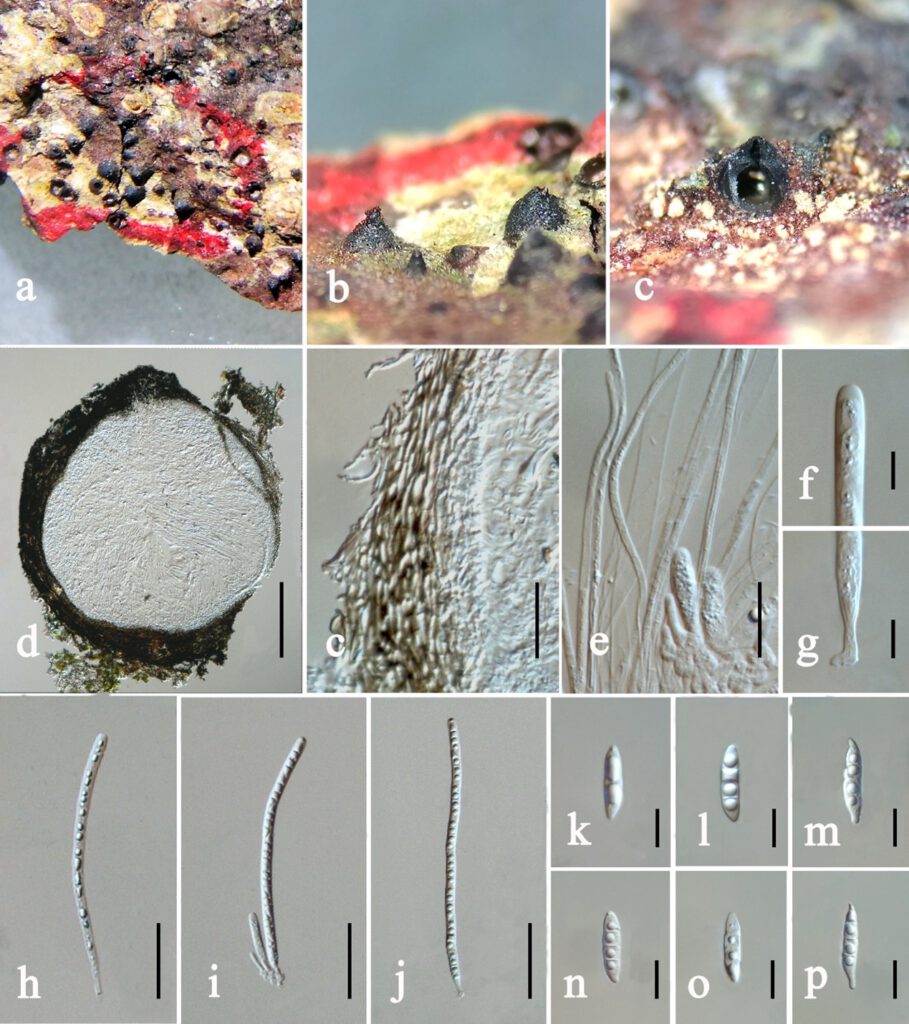Aureobasidium melanogenum
MycoBank number: MB 807698; Index Fungorum number: IF 807698; Facesoffungi number: FoF 10609;
Saprobic on the bark of Khayaseegalesis(Desr.)A.Juss.. Sexual state: Ascostromata 620–833μm high×530–766μm diam (x = 710× 662 μm, n=10), dark brown to black, Semi-immersed on host tissue, solitary, scattered, globose to subglobose, Carbonaceous. Peridium 42–170μm diam (x = 115 μm, n=30) μm, thic-welled, comprised of an inner layer of hyaline cell and an outer layer of brown textura angularis cell. Hamathecium unbranched. Asci 150–230μm high × 6 –10μm diam (x = 180×10 μm, n=30), 8-spored, unitunicate, cylindrical or clavateseptate. rounded at the apex with an ocular chamber. Ascospores 23.54–36.81μm high × 5 – 8 μm diam (x = 30 × 7 μm, n=30), overlapping uniseriate, 1-3 septate, constricted at the septum, fusiform to ellipsoid, gradually tapering towards the apex, containing up to four refractive oil globules. Asexual state: Undetermined.
Culture characteristics – Colonies on PDA reaching up to 80 mm in 14 days at 25 °C, spreading, smooth, flat, cream-colored from above and below Rounded margins.
Material examined – CHINA, Guangdong Province, Guangzhou City, Haizhu District, Zhongkai University of Agriculture Engineering, 23°6′32″ N, 113°16′37″ E, alt. 20 m, On the bark of Khayaseegalesis(Desr.)A.Juss., 27 July 2021, YH. Yang & CF. Liao ((ZHKU ***,); living culture, ZHKUCC ***.
GenBank submissions – LSU: xxx, ITS: xxx.
Notes – Aureobasidium was introduced by Viala and Boyer (1891) and Aureobasidium vitis assigned as the type specimen. In the phylogenetic tree show our new collection is similar to Aureobasidium melanogenum (CBS 125735) with support (ML: 93, PP: 1.00) (Fig. ###). Most of this genus only has asexual morphs and our cluster only found sexual morphs. Our species was first discovered on Khayaseegalesis (Desr.) A. Juss.. Hence, we illustrated as a new record on Khayaseegalesis.

Fig. Aureobasidium melanogenum (ZHKUCC ***) a–c. Appearance of stromata on dead wood. d. Section through stroma. e. Peridium. f. Hamathecium. g. Ocular chamber of Asci h–j. Asci. k–p. Ascospores.
